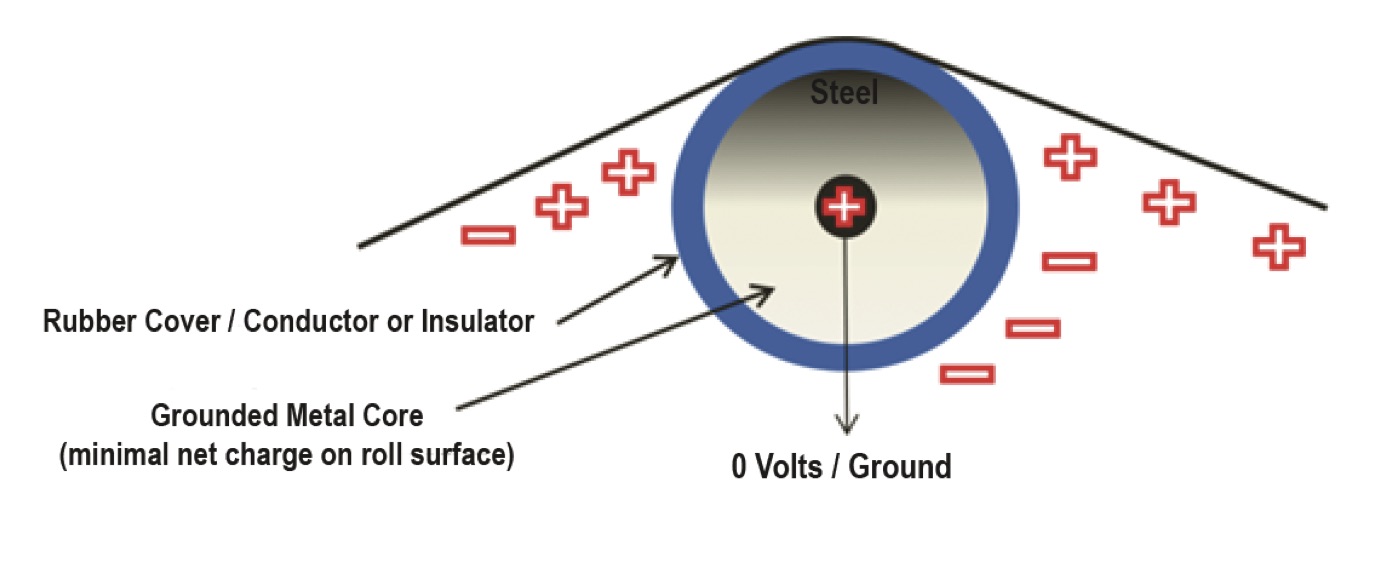Do Conductive Rubber Coverings Help Reduce Static?
- Published: May 10, 2022
Source of Static Generation
When a web contacts a roller surface, electrons can transfer from one material to the other. The electron has a negative charge. The molecule the electron departed from is left with a positive charge. This happens because of the chemical structure of the materials. Some molecules want to gain electrons and some want to lose them. The number of electrons transferred is very small; perhaps one molecule in a million gives up an electron. This process is called Triboelectric Charging (or effect). Every time the web touches something, it potentially can gain or lose charges of either polarity depending on the interaction with what it touches.
As long as the web and the roller cover are in contact, (assuming neither web nor roller previously had any charge) the voltage is zero, there is no static generated. Static is generated when the materials are pulled apart and the charges cannot return to origin.
The volume of charges produced can be affected by factors such as web tension, nip pressure, web wrap angle, speed, rubber hardness, and rubber surface roughness. These factors all have to do with the intimacy and area of contact between the two surfaces which directly affect the number of charges produced.

Dangers of Static Electricity
- Shock hazard to operator
- Web damage from spark discharges
- Web contamination, dust
- Fire hazard using flammable solvents
- Discharge effects on computers, PLCs, controllers
- Wind-up roll or stacking problems
Reducing Web Static?
You would expect that a grounded metal roller with a conductive rubber covering would remove static from a charged web, but sometimes that is not the case. The main reason is most likely that the web is two-sided; each side can have a different polarity and magnitude of charge. The charges on the side of the web contacting the roller may flow to ground when the web first touches the roller, but the charges on the opposite side of the web pull charges up from ground when the web is departing the roller so that the net charge on the web does not change much or at all.
The goal of “electrically conductive rubber coverings” is two-fold:
- Eliminate additional static that can occur on the covering surface by not being an insulator.
- Reduce in most cases, the charge that is present on the rubber covering.
Application Example
S-wrap assemblies are notorious for building static where both rubber rollers have the same rubber covering. In this case, the triboelectric interaction with the first roller which contacts one side of the web is the same as the second roller which contacts the opposite side of the web. The charges generated by both rollers are the same polarity and can be additive. Here a conductive rubber, along with a channeled path to ground (brush assembly/conductive grease/bearings) can help reduce the static created.
Conclusion
In static environments, using a conductive, grounded, rubber covered roller can only help in the ever ending battle with static build up. This will minimize charge, and help to keep web voltages down to acceptable levels.















